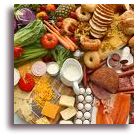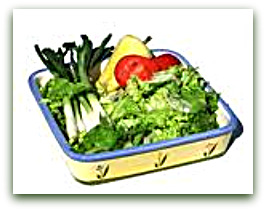Free Glycemic Index Chart to Help You Rate Your Blood Sugar Levels.
This Glycemic Index Chart has been developed as a way of rating the effect that a particular food has on blood sugar levels.
Therefore, foods that cause a rapid rise in blood sugar (and consequently an excessive release of insulin are known as "high glycolic foods".
Science is telling us that we must eat a diet that maximizes the accuracy of insulin and leptin (a natural hormone that reduces appetite).
In that perspective, you should have an eating plan that concentrates on good fats and reduced non-fiber carbohydrates.
Also,in order to keep your blood sugar levels down, you should avoid foods with simple sugar, syrups, any grain but 100% whole grain, and lousy ageing fats (trans and saturated fats).what causes diabetes? Many people following this way of eating have been able to totally eliminate the use of their drugs, including insulin. The Glycemic Index Chart is a good tool to identify what foods are better for youWhat is the Glycemic Index of Food?
The Glycemic Index (GI) is a scale that ranks carbohydrate-rich foods by how much they raise blood glucose levels compared to a standard food. The standard food is glucose or white bread.

Eating foods with a low Glycemic Index may help you to:
Control your blood glucose level
Control your cholesterol level
Control your appetite
Lower your risk of getting heart disease
Lower your risk of getting type 2 diabetes
Why Should I eat Foods with a low Glycemic Index?
How to Use the Glycemic Index Chart of Foods:
Use these meal planning ideas to include the Glycemic Index Chart of Foods as part of healthy eating.
Enjoy vegetables, fruits and low-fat milk products with your meals. These are carbohydrate-rich foods that, in general, have low glycemic index.
Plan your meals with foods in the low and medium Glycemic
Index starch choices on the list that follows.
Try foods such as barley, bulgar, couscous, or lentils, which have a low Glycemic Index.
Consult a registered dietitian for help with choosing low GI foods, adapting recipes, and other ways to incorporate low GI foods in your meal plan. Enjoy vegetables, fruits and low-fat milk products with your meals. These are carbohydrate-rich foods that, in general, have low glycemic index.
If I Eat Foods With a Low Glycemic Index,
Can I Eat as Much as I Want?
In the following glycemic index chart, carbohydrate-containing foods are measured relative tothe Glucose Standard Value of 100: LOWER is BETTER
From this "Glycemic Index Chart" page, back to "Home Page"page
